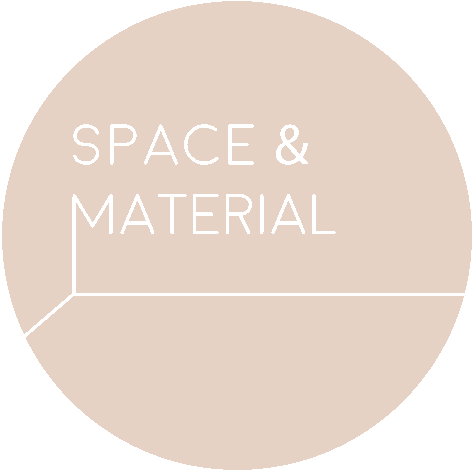OPEN DOOR CONVERSATIONS WITH CHEN JHEN
“I’d rather not think about it. It’s getting more open, no matter if it’s in the definition of design or the definition of artist, it’s more open now. So I think now is the moment you can leave this question aside and you can do whatever you want then later, maybe history or whatever will define what it is.”
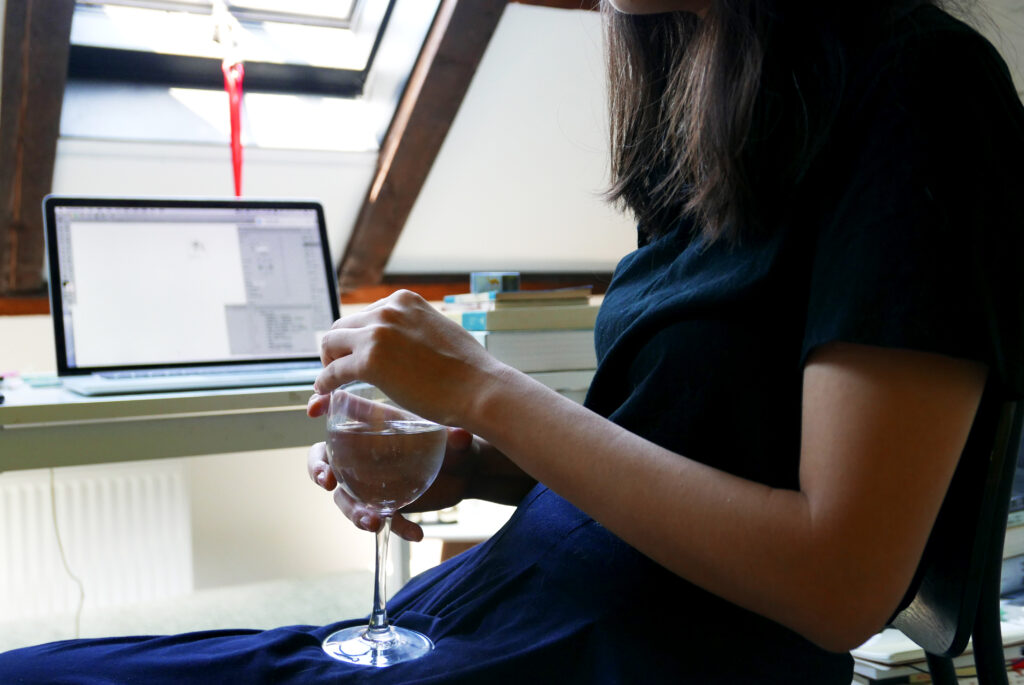
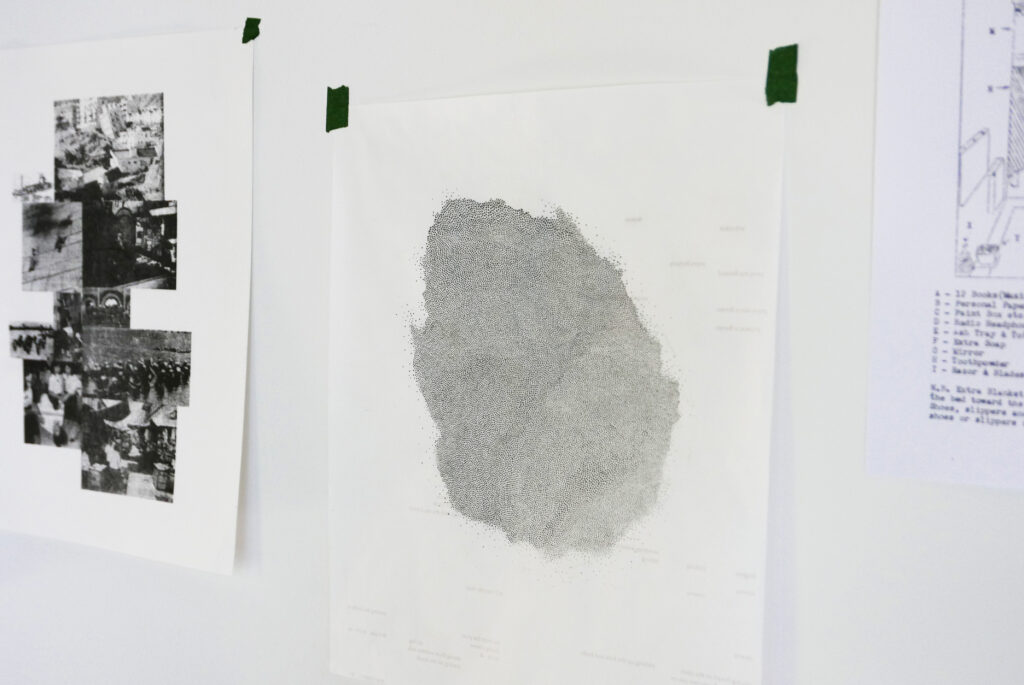
My name is Chen Jhen. I come from Taiwan and in 2014 I studied in the Information Design department from Eindhoven Design Academy…Before when I was in Taiwan I was working as graphic designer for five or six years, then I moved to mostly commercial design, book design, something like that. So I moved here (the Netherlands) and then I start to do more artistic, creative things here. In school I got the opportunity to do these kinds of things. I graduated in 2016, then I worked in a graphic studio in Amsterdam for a year and then I got an opportunity to move here (Maastricht) in 2018 to do the residency in Jan Van Eyck. So I just stay here for a while because I don’t know where I should go next.
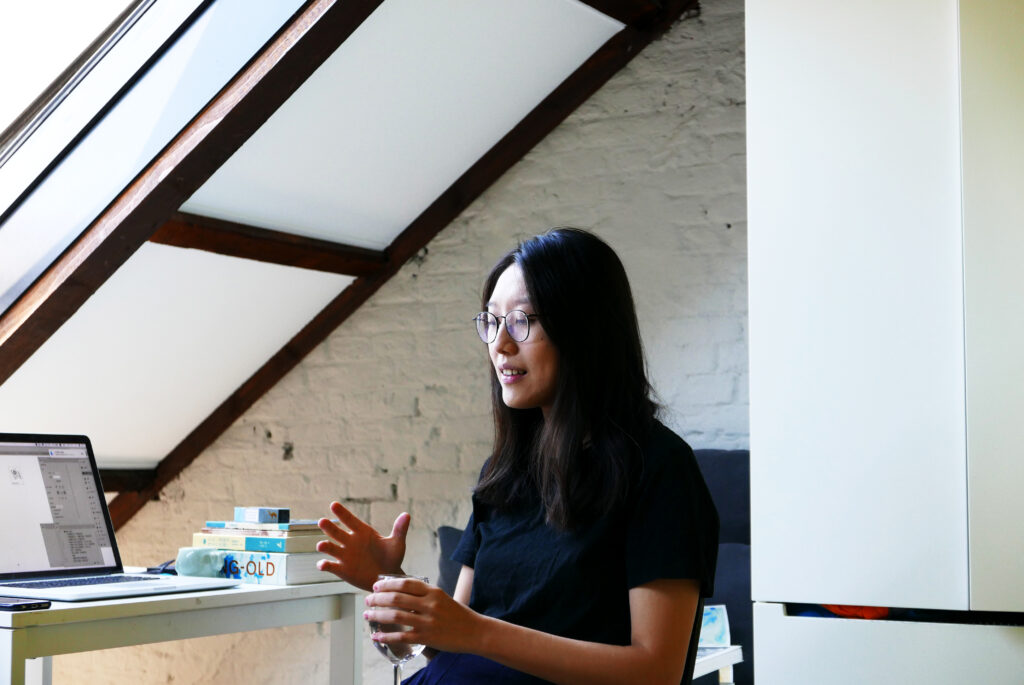
I studied graphic design in my Bachelor so after I graduated from school, a lot of people just go straight to the Master. But I was just thinking about, maybe I should stop a bit and try to find a job, and then just work a bit. I worked in a studio, as a kind of freelance agent for a year. But I think for some reason, I think I’m going crazy or something, I feel like I can do by myself. But…(laughs) actually, it’s way too early when I think about that. So I worked in a studio for a year then I think, “Yeah, I can do it by myself. I can do freelance by myself,” so I quit. Then I quit, then my boss keep calling me and saying, “You know what, you cannot do this, you have to come back. I can pay you more, you have to come back.”
And I was like, “No, I’m not going to go back!” so I didn’t go back, I just keep working like that. But it didn’t work very well in the beginning. I think for many reasons it is actually not that easy to work as a freelancer. Because you could not find the client, then the client didn’t really respect the designer. So you have to spend a lot of effort to try to find a balance. You have to prepare a lot to convince the client instead of putting lots of attention on the design itself. So I think that’s what my struggle was in the beginning. I think it’s the same pattern as other freelance graphic designers, it’s also very hard in the beginning then later you find your own way to continue this kind of thing.
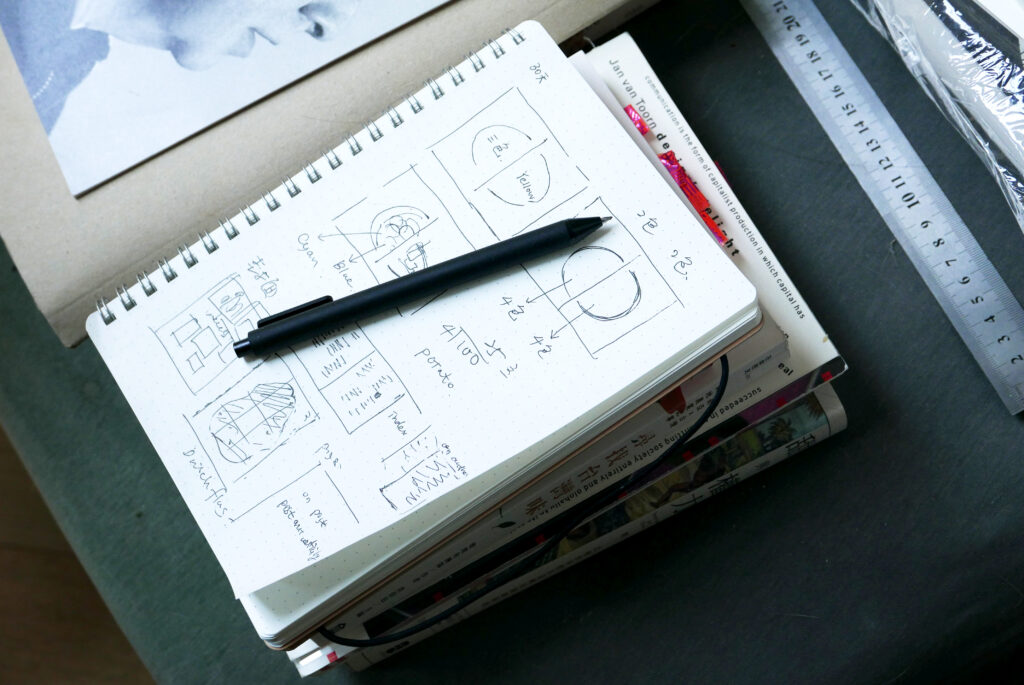
I worked as a freelancer for five years I think. Then I was thinking I think I should study aboard somewhere. So I thought to study in America, or the UK, or the Netherlands. In America, I think the tuition fee is too high so I didn’t really think about that. In the UK, I think the design school in the UK has a very high reputation in Taiwan so everybody goes for that. And they have their kind of office in Taiwan so you can just directly go to the office and say you want to interview or something like that.
So I think just like the other students are doing, they apply to a lot of schools and then they choose one. I have to say I didn’t really know what Dutch design is, at that moment. It was totally vague, so I didn’t know what would happen there, I just feel like, you know what I just don’t want to do this kind of graphic design anymore. It’s like I don’t know what I’m going to do; I just know I don’t want to do this thing anymore.

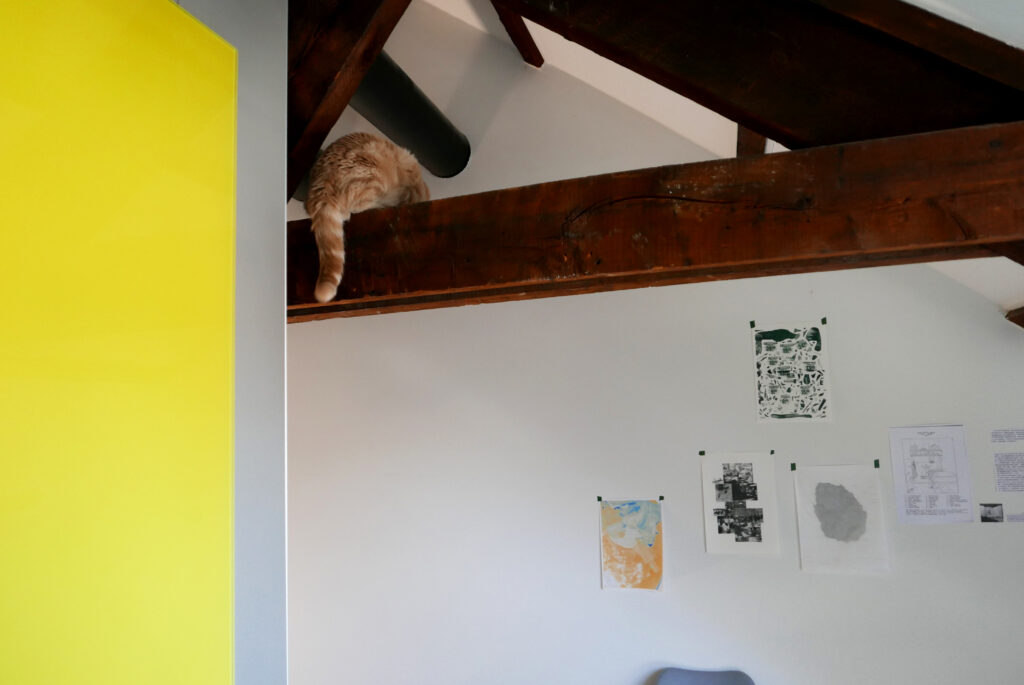
Eindhoven’s Design Academy has a very high reputation on their industrial design, but not graphic design. Also my department is called information design, so it’s not really graphic design, but the department, all the tutors and teachers are graphic design based. I think the idea is…it’s a quite new department. So when I entered the department, it was like the third or fourth year of the department so the mentor or the head of the department also said, I don’t know what this is, so let’s figure it out together, that kind of feeling. But later I think he has a better description or understanding about this department.
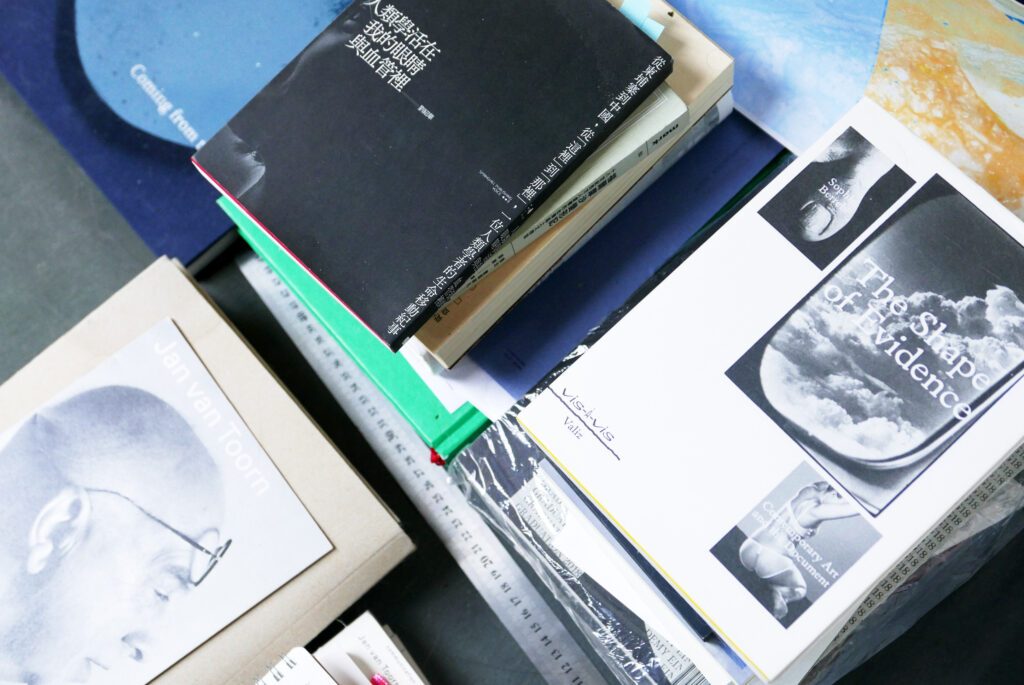
Information is a tool. It’s technology. So for example, you are using Word, the software, so unconsciously, your way of thinking, your way of writing will be influenced by this tool, but you aren’t aware of it. So in this department you have to learn how to be aware of the tool you are using. Like you are a graphic designer and you are using Adobe, so your kind of design direction or your thinking will unconsciously be led by the software or tool you are using to create. So that’s why we then have to have the critical thinking behind those tools and rethink about why we are using that.
I don’t think it applies in a very obvious way. It’s always like you know the theory but you cannot just directly apply the theory on everything or all the things you design. I think this theory unconsciously influences the way I make things. It’s more like a very subtle way. And also unseeing, you can’t see the regular things, like the every day shopping, and the news photos from an everyday perspective.
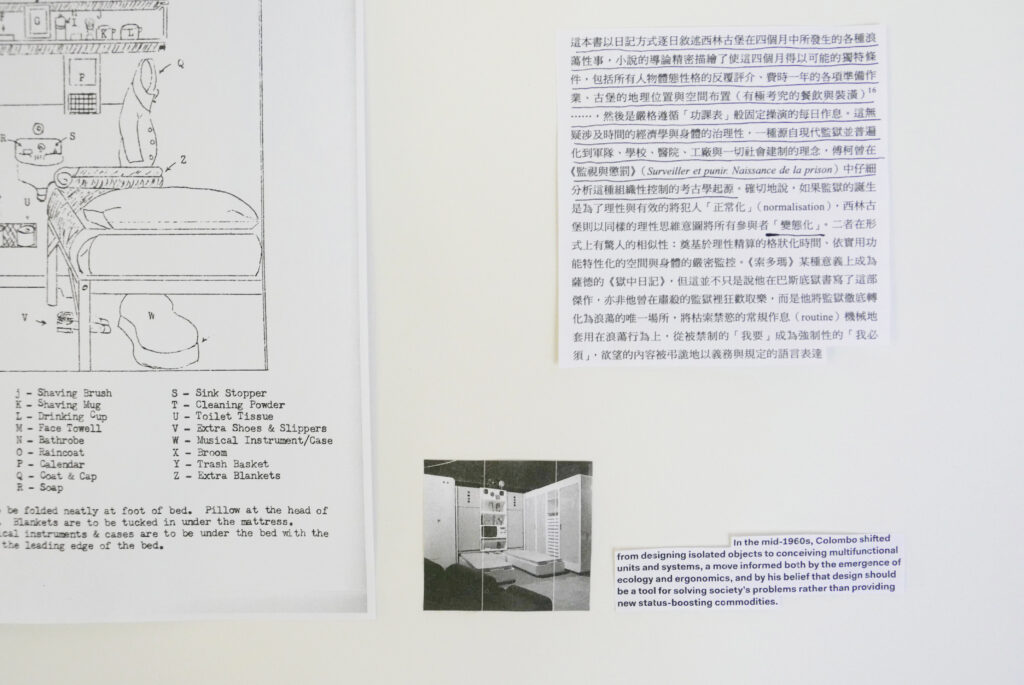
In the Design Academy, it is very different than Jan Van Ecyk. I also worked at Jan for a year. But Jan Van Eyck people are even more artistic, even more abstract. So they are dealing with something more…Like in the Design Academy, you kind of understand why people are doing that, but here it’s like: “What? Huh? Ok…” It’s such a very, very little thing they can expand to a very big idea or something like that. But it’s beautiful, it’s also beautiful.
So in the beginning of Jan Van Ecyk, I was always trying to find a balance between the education I accepted before and the people (who) are doing completely different things here, from different places, they have a different kind of artistic approach, but for me, I’m learning all the time. For me it’s very uncomfortable to feel like this. Like it is ok to do weird things. Because in Taiwan it’s more like yeah, graphic design should be like this; industrial design should be like this; and art should be like this. They are completely different things, but here, you can do something half-half or you can do everything mixed together and it’s totally fine with everyone. So it’s like you can do everything and no one will judge you. But it’s not judge you fundamentally – of course people judge each other I think this, I don’t like this – but they don’t judge you fundamentally saying this is not art, this is not design or something like that. So this makes me feel very comfortable to be here.
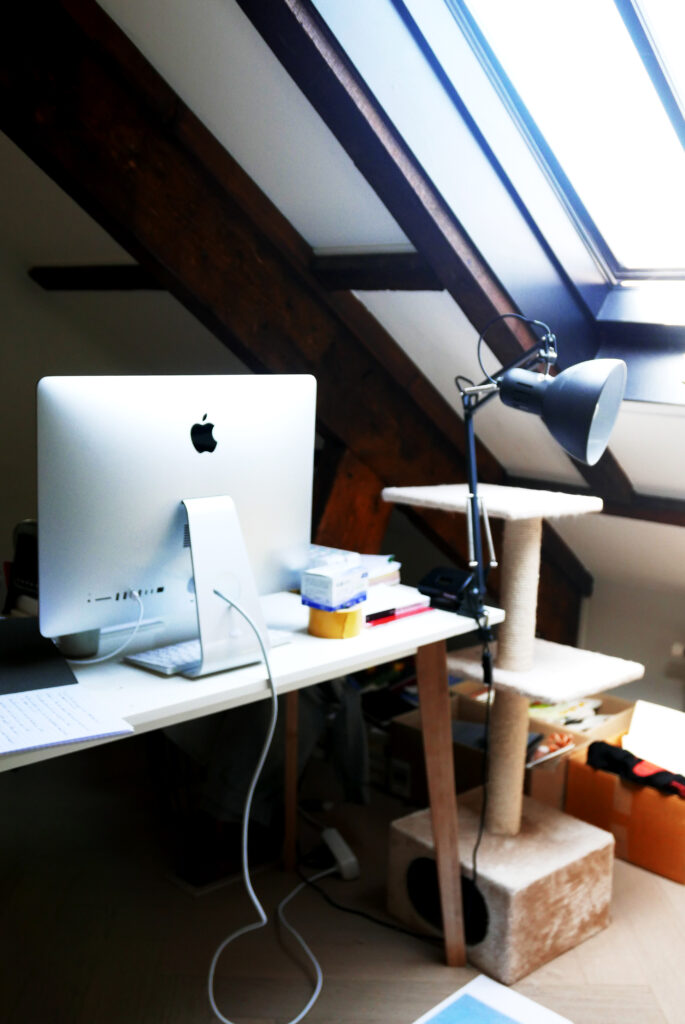
On living and working abroad
I think being here has definitely kept me more focused, not only because of the design or art field things, I don’t speak the language here so I don’t get lots of distractions like, so maybe tomorrow I should go to a protest or yeah, I should care about more issues here. I read the news here, I just know kind of a little bit about here. But I can kind of focus on what I’m doing and I can spend more time on thinking. But it’s also kind of…sometimes it’s a bit isolating, so I think here, you as a foreigner, you have spend a little more effort on convincing people like why you are doing that (making your work). In Taiwan as well, but I think it’s also about my personality, I don’t really like to post a lot of things on Instagram and encourage people and say, “You know what. Look at what I’ve done,” that kind of thing. So for me it’s a bit of a struggle because I have to approach people and talk to people and tell them what I’m doing. I think it’s my personal problem…. I like to focus on one thing and doing one thing by myself. I enjoy that part, the process or doing art and design. But I don’t like the start and end part. You have to start the things, then, the end you have to promote these things, so this part is really not what I like, but I really enjoy the things in the middle.
I think it happens to all the foreign artists here, especially (those from) Asia or African countries. I feel the Dutch people or the white-centered part of Dutch people. They will kind of expect that you will have a certain kind of art or that your art should be about your own country or it should be about some very East style, or if you are an African artist than you should have some African culture, or historical issues (in your work). I feel like if you approach that kind of thing you will get a little bit more attention. It’s how I feel, but also I talked to other artists at Jan Van Eyck, they have the feeling like you have to, well it’s not like you have to, but if you do that, then people will be a little more appreciative. It’s a little bit awkward too; of course its nice to get attention, but for me it’s a very subtle awkward feeling. But I think in Taiwan – in everywhere – it’s the same. So if you are a white artist, you are totally ok to deal with something very abstract so something from your own personal expression, that kind of thing. But I think they see Asia or artists from other foreign countries in a different standard – a little bit.
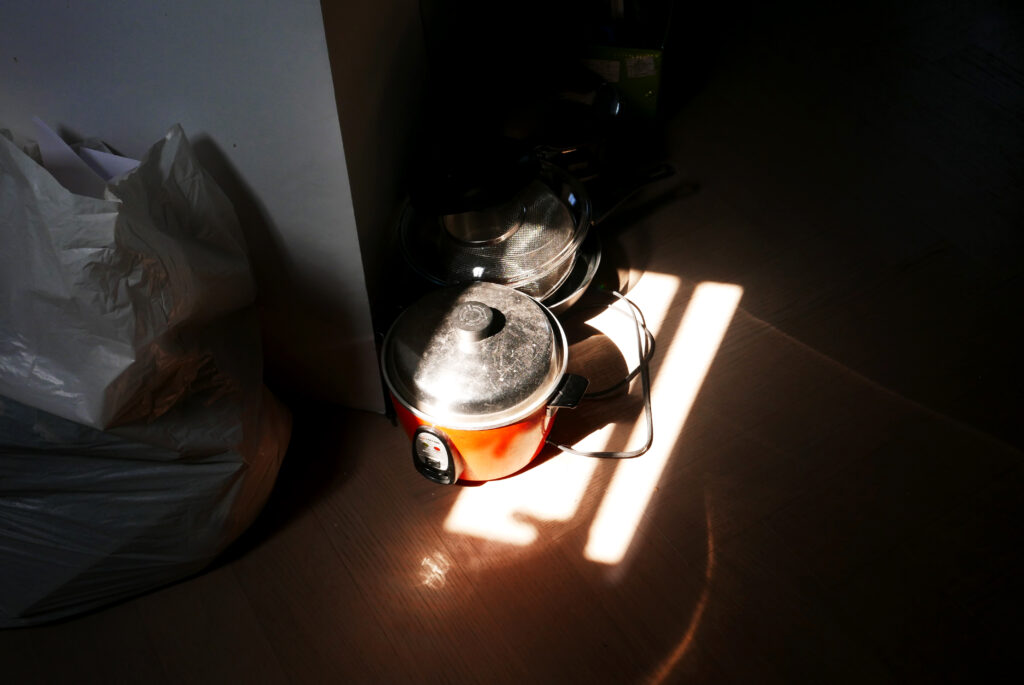
This was a long project I did in the beginning in Amsterdam when I worked there. During lunchtime, I felt a bit awkward because I could not recognize the food on the table. I didn’t know how to eat it; it’s totally new to me. So I watched the colleagues in front of me to see how they eat, how they compose their sandwich. What is their first sandwich, what is the second sandwich and what is the third sandwich, and also the conversation between these sandwiches. So I just memorized all the lunch things in my mind and I go back to my seat and I very quickly record the conversation and the sandwich details. Later with another performer, we developed these notes into a kind of performance, a script and the performer re-performed the lunch again and I made a video about that and I also made a book about this.
Then later when I was in Jan van Eyck, I started another project to follow strangers in the supermarket to buy what they buy, then I just tried to survive by cooking those foods. (We wrote a blog post about Chen’s project here.) And now I’m working on trying to make all these photos, all this – I want to make a cookbook.
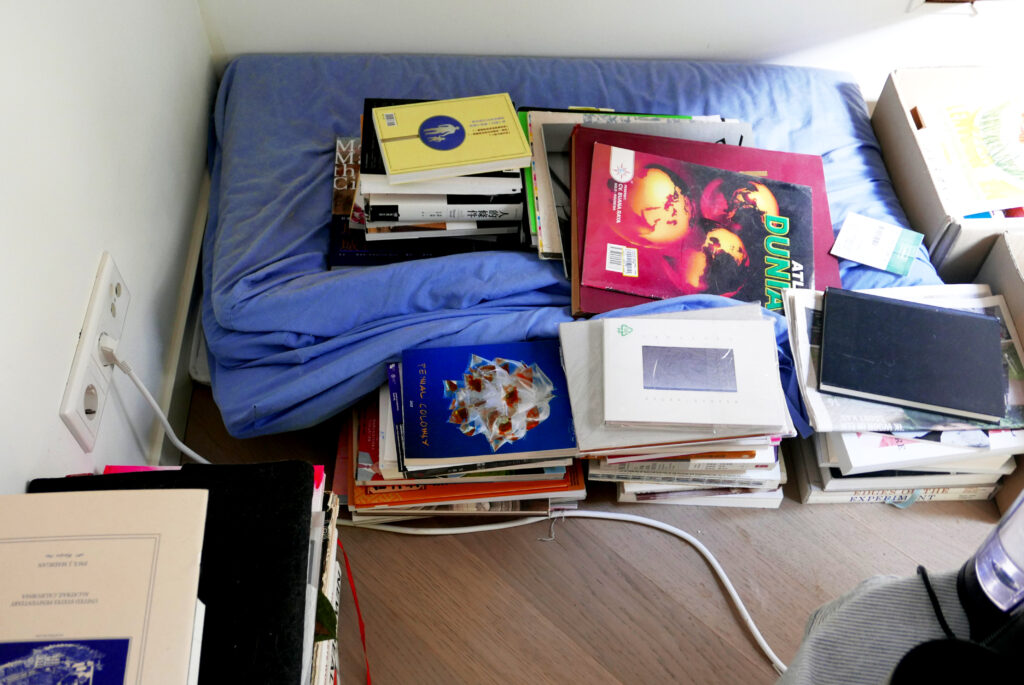
Currently working on
We started this project like two years ago or three years ago. It never really finished and now we are trying to finish. We are collecting photos about Taiwan but it’s all from foreign media. I think Taiwan has a very long history of being colonized so a lot of history or information are actually created by the Japanese or other foreign countries. So I’m collecting these pictures, like I think we have 3,000 now and it’s all from the media, from Indonesian, Netherlands, Japan, China, and all these countries that has a certain relation with Taiwan. So I’m just collecting these pictures and scanning them.
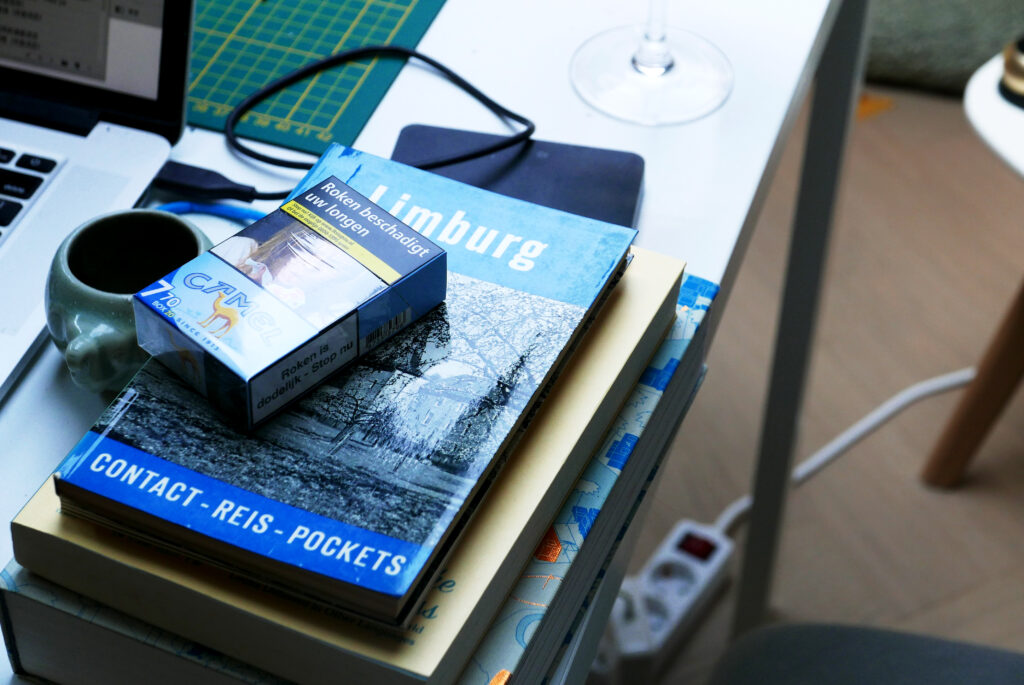
We don’t want to make a normal archive of these photos. So we just give all the photos a different tag. For example, I’m just choosing one; it’s a photo from China and there are males and females in this photo. There are more than five people in this picture; they are facing away from the camera so they aren’t looking at the camera and they outside of a building in China. Then we have other things, for example these people look angry or happy, so giving the different characteristic then. But when you chose the photos, they have this tag but other photos with the same tag will collect together.
Now we are focused on the function because we want to make small groups, so it’s more like Taiwanese identity issues. Like we have a group and we just kick out somebody who doesn’t have a certain value or something like that. So it’s a bit like a metaphor into the Taiwanese identify issue. We (the Taiwanese) don’t know who we are.
So when looking at the foreign newspapers or media, we don’t really read the text right? We only see the pictures so it’s like we are kind of using these image to construct what Taiwan is. It will become a bit like your (the viewers) self-interpretation. So open up this picture and this picture isn’t only about this news piece anymore. It’s open and everyone can read it and can have a totally different understanding about it. And also if you just put these images together, it creates a different meaning so include a Japanese photo and Chinese newspaper photos together and if you compose them in a different way, then you can understand them differently. So I found this openness to personal interpretation super interesting.
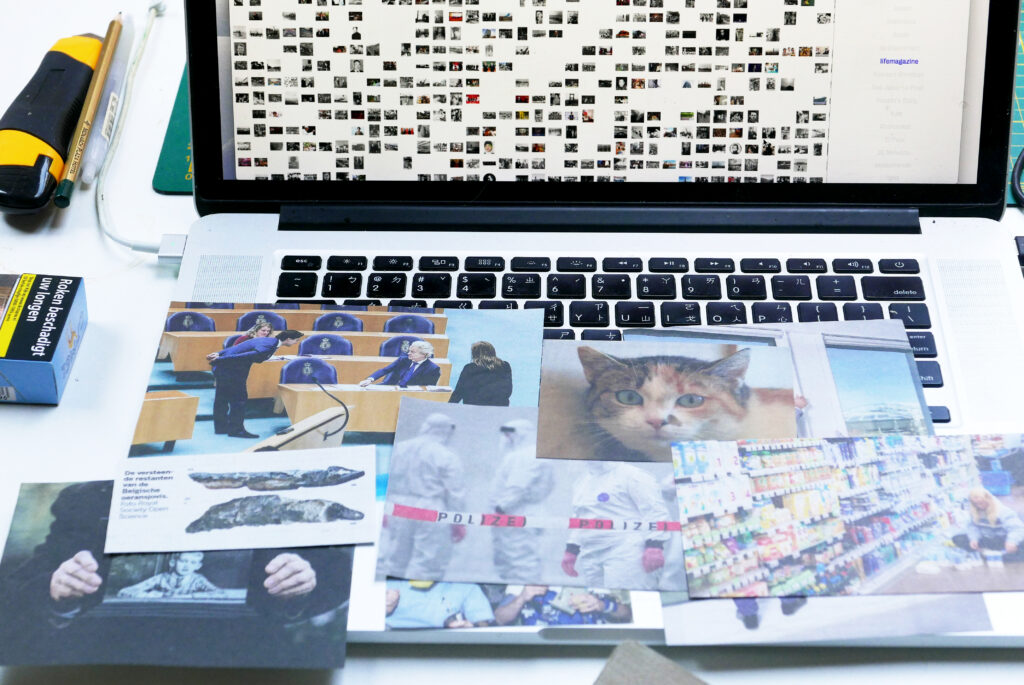
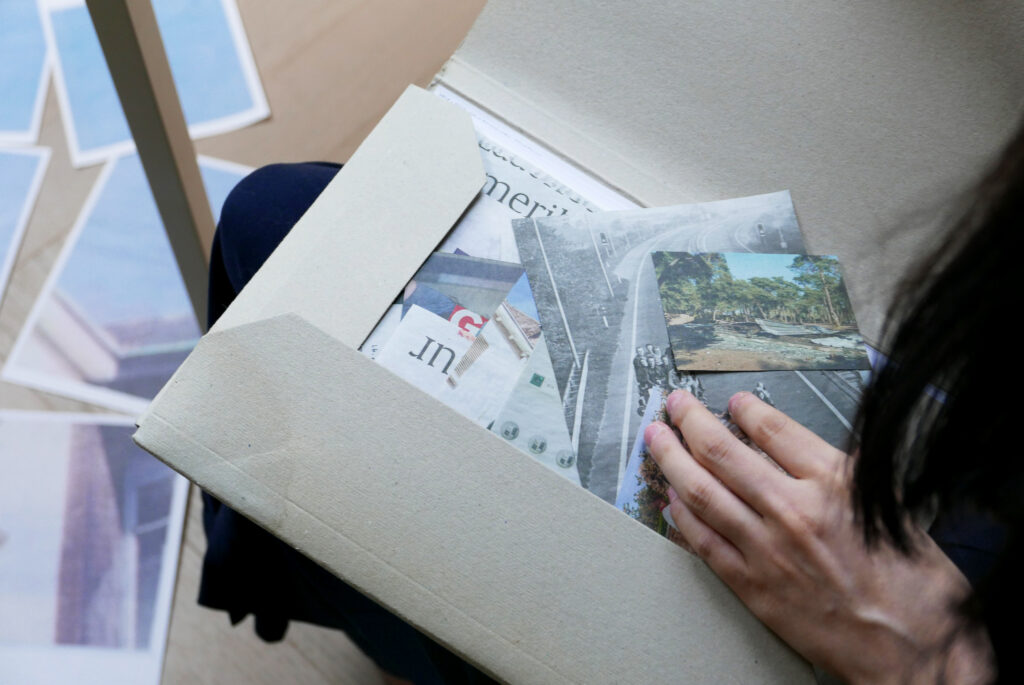
I have an interest in these kinds of media photos. I also have a collection; these are Dutch newspaper photos. I go to the supermarket or buy the newspaper and if there are interesting photos I will cut them out. I don’t know how to deal with this material now. But I found this very interesting already to see the picture itself. I like the photos where you don’t really know what it’s about. Also there are cute kitties. I think the newspaper is called VIA Maastricht and it’s a free newspaper you can take at the supermarket and then they have one specific part, which is to introduce your cute pet. (laughs)

I was inspired by the lunch in Amsterdam. I realized that your taste is a very strong part of your identity. For example, when you see an onion and another vegetable, people from different countries will make them and eat them differently. I found this interesting but I think it’s all the experiments that all the Taiwanese do in the Netherlands to try and find a replacement of the Taiwanese flavor, and we try to find similar things as Taiwan and recreate the Taiwanese “authentic” flavor. I just found this very interesting so I started doing that and use my own body to experience that. When I’m doing this experiment, I only eat the foods that I buy from following people. Sometimes I’ll be very, very hungry because people only buy chocolate and beer so I can only eat that…and cookies. I don’t like cookies, I don’t like chocolate and I had to eat a lot of them. So it’s more like my whole body experiment, my whole body has to suffer from hunger and suffer from “no matter what you have to eat this food, consume this food.” So I’m trying to make a book out of that.
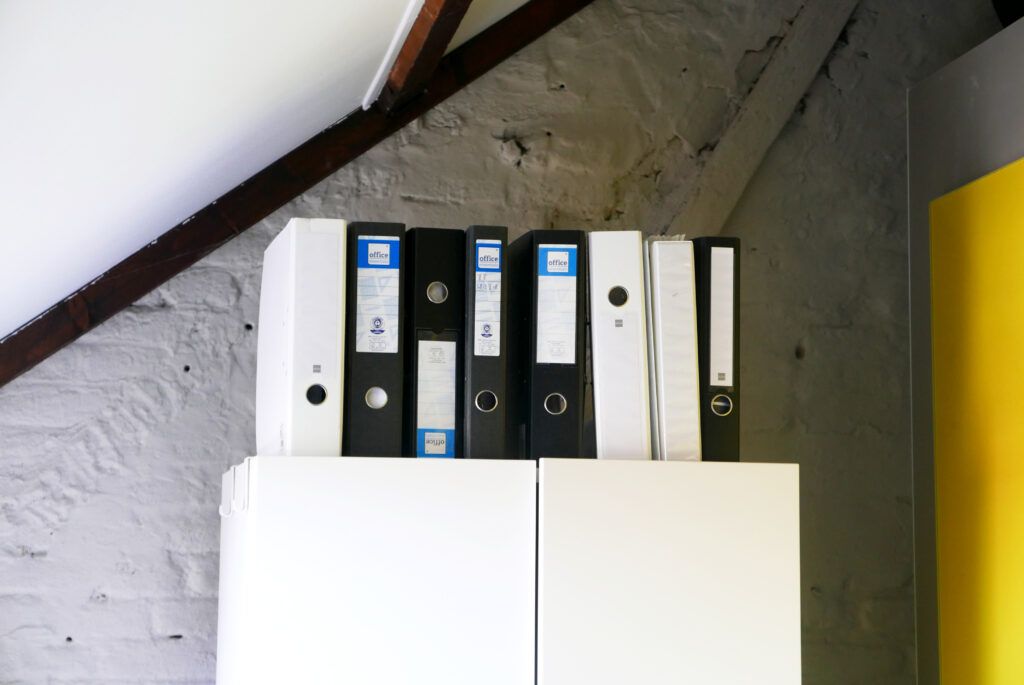
Currently reading
It’s about authenticity of Taiwanese food. Do you know bubble tea? The tea is actually grown in Vietnam but Taiwanese brought the technique to Vietnam to grow the tea then they had to adopt a different kind of culture, different weather, climate, that kind of thing and they finally can grow this tea and sell it back to Taiwan to become the bubble tea. Wei (the author of the book), cares about the bubble tea as a very authentic Taiwanese food but it isn’t really, it’s a kind of mixed culture. So is there really authenticity in anything anymore? That’s just one example. There are more examples. Like, people have the kind of stereotype that Aboriginals in Taiwan only grow certain kinds of things, but they grow coffee as well. They have their own coffee culture, but it’s very hard to sell because people always think coffee is from South America, they have their stereotypes. So they are trying to find their own way to sell coffee. I found this really interesting, about this food and authenticity, how people consume this food, and understand or give this food a certain kind of value. For example, bubble tea is a Taiwanese kind of identity and people even want to put their identity card. But actually it’s kind of mixed. There is nothing authentic anymore.
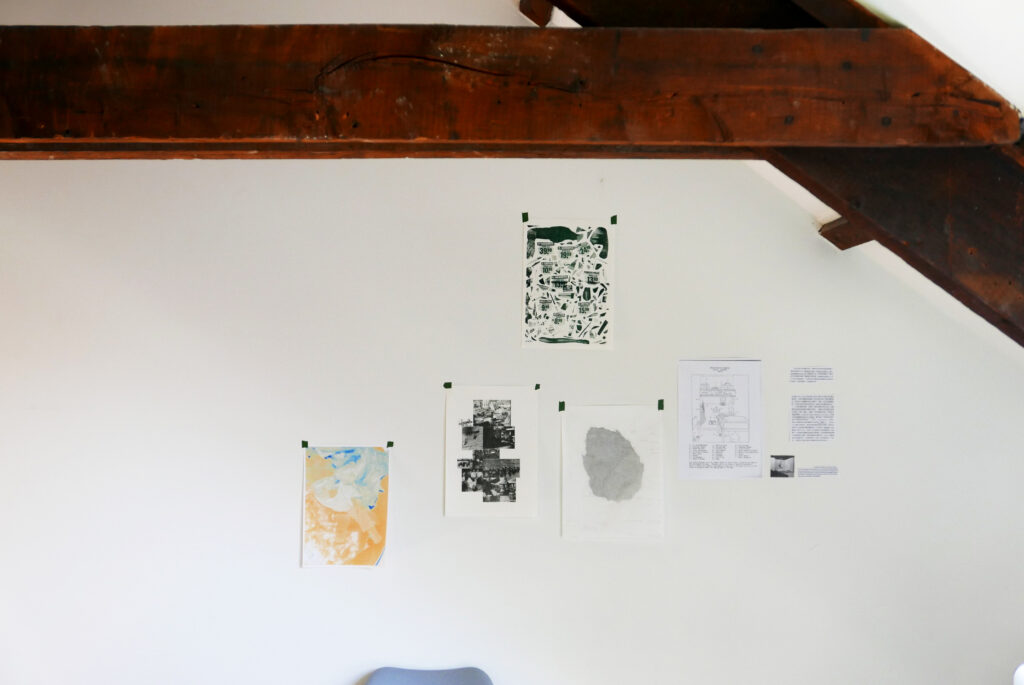
Artists or designers that she is inspired by
There are two. I always keep this book here. Jan Van Torn is my all-time hero. He is a graphic designer and I think, maybe, for people, he is a little bit old-school now. But he was actually the director of Jan Van Eyck 10 years ago. He held a very powerful symposium here called “Design beyond Design” He invited people from different fields, like people focused on politics, and writers, different kinds of people to talk about graphic design. Because if we understand design in a very shallow way, it will be just like a form that you just put content in, and that will become a design. But he wanted to talk more about designer and designs role in society and what design can contribute to society, contribute to politics, contribute to people’s daily lives. I think he had a very famous debate in 1972 with another famous designer Wen Cromwell. He is just a super famous designer. So they have a debate about what design is.
Wen Cromwell is more focused on designs of form so a designer is neutral, they are sitting between the client and the public so you just transform this information to there in a very organized way.
So that’s why when we talk about graphic design, we have a grid system. We have a grid that we put contents in and it becomes a style. But Jan Van Torn has a totally different idea, he thinks that designers cannot be neutral and he shouldn’t be neutral. So he should kind of give a lot of side, well put, even directly put ugly things into his design to provoke people’s attention. So in that debate they debate about what design should be. I think they are both partially right and partially wrong. But Jan Van Torn has influenced me a lot to think about design in a totally different way, in a very social way, in a deeper way or more interesting way to understand design.
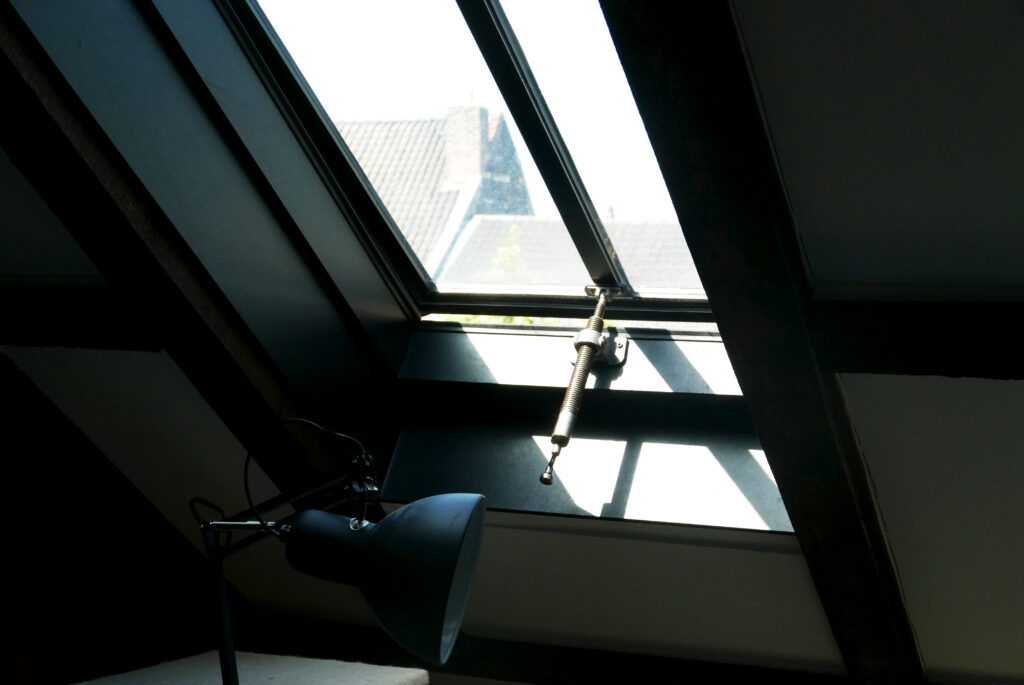
To stay or go
Not now, yeah, because I think here (The Netherlands), I still have things I want to finish. I talked with Jan Van Torn as well, last year we talked about publishing his book in Chinese and I am going to translate it. I already translated his about the debates in 1972 but it was never really published – it was just my personal hobby. But I talked with Jan and we want to publish this book and Design beyond Design. I was to publish these two books in Taiwan. But I’m working very slow. But yes, there are things I want to do here. We also got the best Dutch Design Book (an award) this year so there will be exhibits in museums this year. I think there are still lots of things I can do here so I want to spend a little more time.
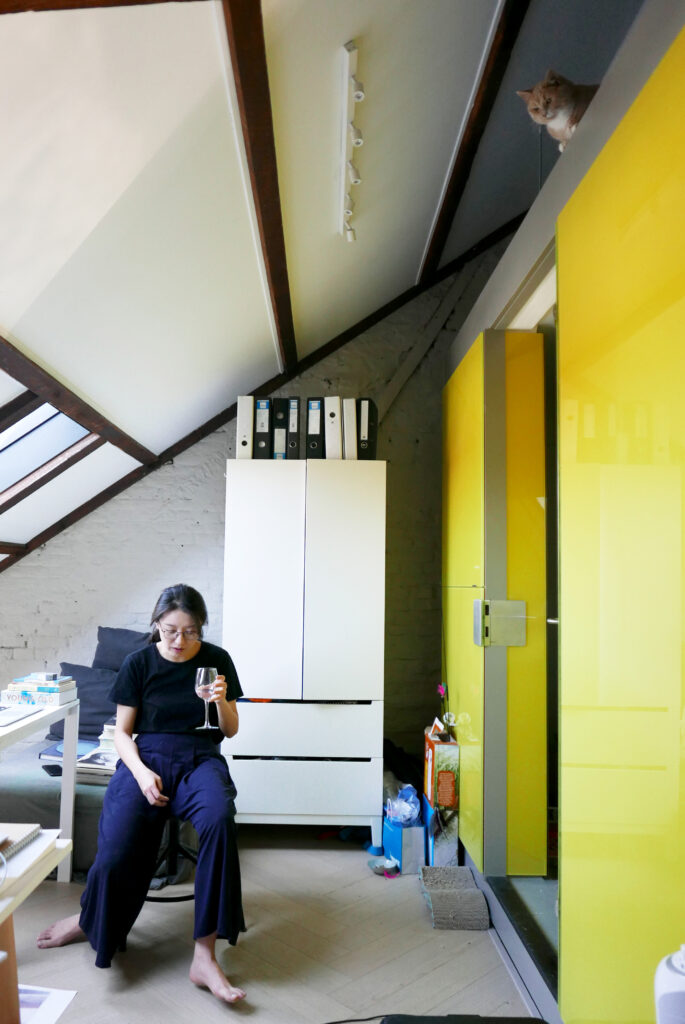
If I’m thinking “Oh I’m doing this work, is it more art, or is it more design? Or am I more of an artist or a designer?”, then I’m just stuck here. I’d rather not think about it. It’s getting more open, no matter if it’s in the definition of design or the definition of artist, it’s more open now. So I think now is the moment you can leave this question aside and you can do whatever you want then later, maybe history or whatever will define what it is.
